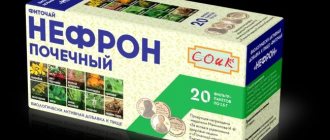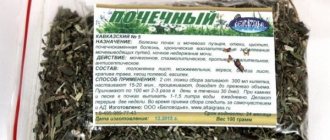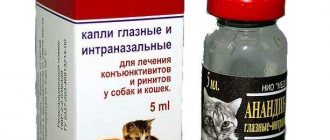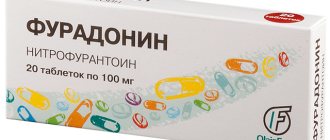Write a review
Reviews: 0
Manufacturers: Dr. R.PFLEGER CHEMICAL FABRIC GmbH
Active ingredients
- Not indicated. See instructions
Disease class
- Enuresis of inorganic nature
- Dysuria
- Urinary incontinence, unspecified
- Reflex bladder, not elsewhere classified
- Other neuromuscular bladder dysfunctions
- Other specified types of urinary incontinence
Clinical and pharmacological group
- Not indicated. See instructions
Pharmacological action
- Antispasmodic
Pharmacological group
- m-Anticholinergics
Spasmex tablets
Instructions for medical use of the drug
Indications for use
— urinary incontinence and imperative urge to urinate with idiopathic and neurogenic detrusor overactivity (multiple sclerosis, spinal injuries, congenital and acquired diseases of the spinal cord, strokes, parkinsonism, etc.); — detrusor-sphincter dyssynergia against the background of intermittent catheterization; — in the complex therapy of cystitis accompanied by imperative symptoms; - pollakiuria and nocturia, nocturnal and daytime enuresis; - mixed forms of urinary incontinence.
Release form
tablets 5 mg; contour packaging 10, cardboard pack 3. tablets 5 mg; contour packaging 10, cardboard pack 5. film-coated tablets 30 mg; contour pack 10, cardboard pack 3. film-coated tablets 15 mg; contour pack 10, cardboard pack 3. film-coated tablets 15 mg; contour packaging 10, cardboard pack 5.
Pharmacodynamics
It is a competitive antagonist of acetylcholine at receptors of postsynaptic smooth muscle membranes. It has a high affinity for m1-, m2- and m3-cholinergic receptors. Reduces the increased activity of the bladder detrusor. It has a myotropic papaverine-like effect. Does not have central effects.
Pharmacokinetics
After oral administration, Cmax in plasma is reached within 4–6 hours. T1/2 is 5–18 hours, does not accumulate. Plasma protein binding is 50–80%. The concentration of trospium chloride after a single dose of 20 to 60 mg is proportional to the dose taken. It is excreted by the kidneys, most of it unchanged, about 10% in the form of spiroalcohol, a metabolite formed by the hydrolysis of ester bonds.
Use during pregnancy
The use of trospium chloride during pregnancy and lactation is possible only if the expected benefit to the mother outweighs the potential risk to the fetus and child (there have been no adequate, strictly controlled studies of the use of trospium chloride in pregnant women and during breastfeeding).
Contraindications for use
- hypersensitivity to the components of the drug; - urinary retention; - narrow-angle glaucoma; - tachyarrhythmia; - myasthenia; - age up to 14 years (there have been no adequate and strictly controlled studies of the use of trospium chloride in children). With caution: - diseases of the cardiovascular system, in which an increase in heart rate may be undesirable: tachycardia, chronic heart failure, ischemic heart disease; - thyrotoxicosis; - increased body temperature; - reflux esophagitis, hiatal hernia, combined with reflux esophagitis; — gastrointestinal diseases accompanied by obstructive conditions: achalasia and pyloric stenosis; — intestinal atony in elderly or debilitated patients; - paralytic ileus; - diseases with increased intraocular pressure: closed-angle and open-angle glaucoma; - chronic inflammatory bowel diseases (Crohn's disease, ulcerative colitis); - dry mouth; - renal failure; - chronic lung diseases, especially in weakened patients; — autonomic (autonomous) neuropathy; - toxicosis of pregnant women; - cerebral palsy; - Down's disease.
Side effects
Frequency of occurrence (number of cases: number of observations): often - more than 1:100, sometimes - 1:100–1000, rarely - less than 1:1000. From the cardiovascular system: rarely - tachycardia. From the gastrointestinal tract: often - dry mouth, dyspepsia, constipation, nausea. From the side of the central nervous system: sometimes - accommodation paresis. From the urinary system: sometimes - impaired bladder emptying. Allergic reactions: sometimes - skin rash.
Directions for use and doses
Orally, before meals, without chewing, with a sufficient amount of water. For adults and children over 14 years of age, the drug is prescribed individually depending on the clinical picture and severity of the disease - 10 mg 3 times a day (30 mg/day) or 15 mg 2–3 times a day (30–45 mg/day). With a daily dose of 45 mg, it is also acceptable to take 30 mg in the morning and 15 mg in the evening. For neurogenic detrusor hyperactivity, 15–20 mg is prescribed 2 times a day in the morning and evening (30–40 mg/day). The average duration of treatment is 2–3 months. After the disappearance of symptoms, anti-relapse treatment is recommended for 2–4 weeks. If longer-term therapy is necessary, the question of continuing treatment is reviewed by the doctor every 3-6 months. In patients with renal failure (creatinine Cl 10–30 ml/min/1.73 m2), the daily dose should not exceed 20 mg.
Overdose
Symptoms: blurred vision, tachycardia, dry mouth, hyperemia of the skin. Treatment: gastric lavage and administration of adsorbents (activated carbon, etc.), local administration of pilocarpine to patients with glaucoma, catheterization for urinary retention. In severe cases, prescribe cholinomimetics (for example, neostigmine). In case of insufficient effect, severe tachycardia and/or circulatory instability, administration of a beta-blocker (for example, 1 mg of propranolol IV under ECG and blood pressure monitoring).
Interactions with other drugs
Strengthens the effect of amantadine, tricyclic antidepressants, quinidine, antihistamines, disopyramide, beta-agonists.
Special instructions for use
Before starting treatment, it is necessary to exclude such organic causes of pollakiuria and urinary incontinence as heart or renal failure, polydipsia, and urinary tract tumors. If the function of the urethral sphincter or detrusor is impaired, complete emptying of the bladder should be ensured by catheterization. During the treatment period, it is necessary to refrain from driving vehicles and engaging in potentially hazardous activities that require increased concentration and speed of psychomotor reactions. No interactions were found between trospium chloride and cytochrome P450 enzymes involved in the breakdown of drugs during metabolism (P450 1A2, 2A6, 3C9, 2C19, 2D6, 2E1, 3A4). Therefore, interactions with other drugs that affect the cytochrome system are not expected.
Storage conditions
List B: In a dry place, protected from light, at a temperature of 15–25 °C.
Best before date
60 months
ATX classification:
G Genitourinary system and sex hormones
G04 Preparations for the treatment of urological diseases
G04B Other drugs for the treatment of urological diseases (including antispasmodics)
G04BD Antispasmodics
G04BD09 Trospium chloride
Spasmex®
- diseases of the cardiovascular system, in which an increase in heart rate may be undesirable: atrial fibrillation, tachycardia, chronic heart failure (CHF), coronary heart disease (CHD), mitral stenosis, arterial hypertension, acute bleeding;
- thyrotoxicosis (possibly increased tachycardia);
- increased body temperature (may further increase due to suppression of the activity of the sweat glands);
- reflux esophagitis, hiatal hernia, combined with reflux esophagitis (decreased motility of the esophagus and stomach and relaxation of the lower esophageal sphincter can slow down gastric emptying and increase gastroesophageal reflux through the sphincter with impaired function);
- diseases of the gastrointestinal tract (GIT), accompanied by obstruction: achalasia and pyloric stenosis (possibly decreased motility and tone, leading to obstruction and retention of gastric contents);
- intestinal atony in elderly or weakened patients (possible development of obstruction), paralytic intestinal obstruction (possible development of obstruction);
- diseases with increased intraocular pressure: open-angle glaucoma (mydriatic effect may cause a slight increase in intraocular pressure; therapy adjustment may be required), age over 40 years (risk of undiagnosed glaucoma);
- ulcerative colitis (high doses can inhibit intestinal motility, increasing the likelihood of paralytic ileus; in addition, the manifestation or exacerbation of such a severe complication as toxic megacolon is possible);
- dry mouth (long-term use may cause a further increase in the severity of xerostomia);
- renal failure (risk of side effects due to decreased excretion);
- chronic lung diseases, especially in children and weakened patients (a decrease in bronchial secretion can lead to thickening of secretions and the formation of plugs in the bronchi);
- myasthenia gravis (the condition may worsen due to inhibition of the action of acetylcholine);
- autonomic (autonomic) neuropathy (urinary retention and paralysis of accommodation may increase), prostatic hyperplasia without urinary tract obstruction, urinary retention or predisposition to it, or diseases accompanied by urinary tract obstruction (including bladder neck due to prostatic hypertrophy );
- gestosis (possibly increased arterial hypertension);
- brain diseases in children (the effects on the central nervous system may be enhanced);
- Down's disease (possibly unusual dilation of the pupils and increased heart rate);
- central paralysis in children (the reaction to anticholinergic drugs may be most pronounced);
- liver failure.
Similar drugs:
- Papaverine Oral tablets
- Spasmalgon Tablets
- BELLASTHESIN (Bellasthesinum) Oral tablets
- No-Spa Oral tablets
- Andipal Tablets
- Magnesium sulfate Powder for oral suspension
- Magnesium sulfate Substance-powder
- Celandine grass (Chelidonii majoris herba) Vegetable raw materials
- Duspatalin Oral tablets
- Niaspam Capsule
** The Drug Directory is intended for informational purposes only. For more complete information, please refer to the manufacturer's instructions. Do not self-medicate; Before starting to use the drug Spazmex, you should consult a doctor. EUROLAB is not responsible for the consequences caused by the use of information posted on the portal. Any information on the site does not replace medical advice and cannot serve as a guarantee of the positive effect of the drug.
Are you interested in the drug Spazmex? Do you want to know more detailed information or do you need a doctor's examination? Or do you need an inspection? You can make an appointment with a doctor - the Euro lab is always at your service! The best doctors will examine you, advise you, provide the necessary assistance and make a diagnosis. You can also call a doctor at home . Euro lab clinic is open for you around the clock.
** Attention! The information presented in this medication guide is intended for medical professionals and should not be used as a basis for self-medication. The description of the drug Spazmex is provided for informational purposes and is not intended for prescribing treatment without the participation of a doctor. Patients need to consult a specialist!
If you are interested in any other drugs and medications, their descriptions and instructions for use, information about the composition and form of release, indications for use and side effects, methods of use, prices and reviews of drugs, or you have any other questions and suggestions - write to us, we will definitely try to help you.
Spazmex tablet 5 mg cor x30
Trade name: Spasmex International name: Trospium chloride
Release form: tablets 5 mg (blisters)
Ingredients: trospium chloride 5 mg
Pharmacological group: m-anticholinergic agent
Pharmacological group according to ATK: G04BD09 (Trospium chloride)
Pharmacological action: ganglion-blocking, m-anticholinergic, antispasmodic, dysuria treatment agent,
Indications: Pollakiuria, nocturia, bladder dysfunction (urinary incontinence) of non-hormonal and non-organic etiology, spastic neurogenic bladder dysfunction (detrusor hyperreflexia in multiple sclerosis).
Dosage regimen: Orally, depending on the severity of the patient's condition - 1 tablet (5, 15 or 30 mg) 3 times a day, at intervals of 8 hours. If necessary, the dose is increased by 2-3 tablets or reduced by 0.5 tablets.
Contraindications: Hypersensitivity.
Side effects: Dry mouth, accommodation paresis.
Pharmacodynamics: M-anticholinergic, has an antispasmodic and some ganglion-blocking effect. Does not have central effects.
Pharmacokinetics: Time of onset of Cmax after oral administration is 5-6 hours. After intravenous administration, T1/2 is two-phase: alpha phase - 5 minutes, beta phase - 2.8 hours. Excreted by the kidneys - 48 hours (60% of the administered intravenous doses), of which 93% are unchanged; after oral administration, 1.9% of the dose taken is excreted by the kidneys, of which 84% is excreted in unchanged form.
Special instructions: If the sphincter or detrusor function is impaired, complete emptying of the bladder must be ensured by catheterization. In case of autonomic disorders of the bladder, the cause of dysfunction should be determined before treatment, the possibility of urinary tract infection and bladder carcinoma should be excluded, because they require etiotropic therapy. It is necessary to refrain from potentially hazardous activities that require increased attention and visual acuity (causes paralysis of accommodation). Carefully. Diseases of the cardiovascular system in which an increase in heart rate may be undesirable: atrial fibrillation, tachycardia, CHF, ischemic heart disease, mitral stenosis, arterial hypertension, acute bleeding, thyrotoxicosis (possibly increased tachycardia), increased body temperature (may further increase due to suppression of the activity of the sweat glands), reflux esophagitis, hiatal hernia combined with reflux esophagitis (decreased motility of the esophagus and stomach and relaxation of the lower esophageal sphincter can slow down gastric emptying and increase gastroesophageal reflux through the sphincter with impaired function), gastrointestinal diseases accompanied by obstruction: achalasia and stenosis pylorus (possibly decreased motility and tone, leading to obstruction and retention of stomach contents), intestinal atony in elderly or debilitated patients (possible development of obstruction), paralytic intestinal obstruction (possible development of obstruction), diseases with increased intraocular pressure: angle-closure (mydriatic effect leading to an increase in intraocular pressure can cause an acute attack) and open-angle glaucoma (mydriatic effect may cause a slight increase in intraocular pressure, adjustment of therapy may be required), age over 40 years (risk of undiagnosed glaucoma), ulcerative colitis (high doses may inhibit intestinal motility, increasing the likelihood of paralytic intestinal obstruction, in addition, the manifestation or exacerbation of such a severe complication as toxic megacolon is possible), dry mouth (long-term use may cause a further increase in the severity of xerostomia), renal failure (risk of side effects due to decreased excretion ), chronic lung diseases, especially in young children and weakened patients (a decrease in bronchial secretion can lead to thickening of secretions and the formation of plugs in the bronchi), myasthenia gravis (the condition may worsen due to inhibition of the action of acetylcholine), autonomic (autonomic) neuropathy (delay urine and paralysis of accommodation may increase), prostatic hypertrophy without urinary tract obstruction, urinary retention or predisposition to it, or diseases accompanied by urinary tract obstruction (incl. bladder neck due to prostatic hypertrophy), preeclampsia (possible increased arterial hypertension), brain damage in children (CNS effects may increase), Down's disease (possible unusual dilation of pupils and increased heart rate), central paralysis in children (reaction to anticholinergic LS may be most pronounced), tachycardia (may intensify).
Interaction: Strengthens the effect of amantadine, tricyclic antidepressants, quinidine, antihistamines and beta-agonists.
Drug registration number: P No. 016196/01
Date of registration (re-registration) of the drug: 03/09/2005





